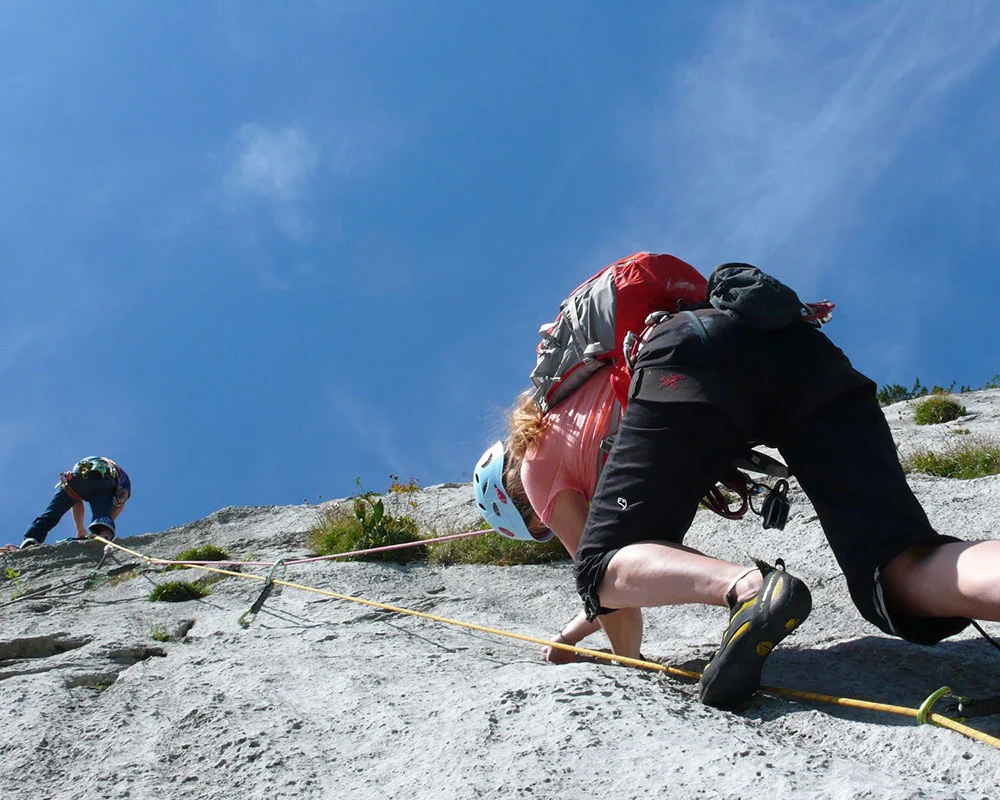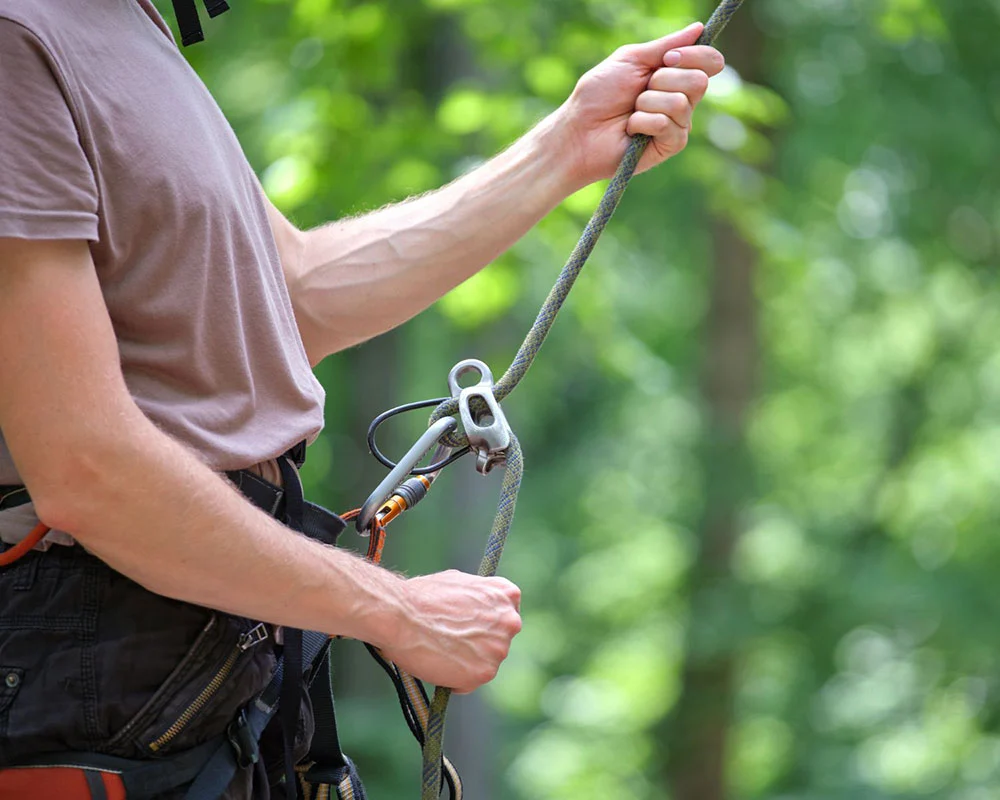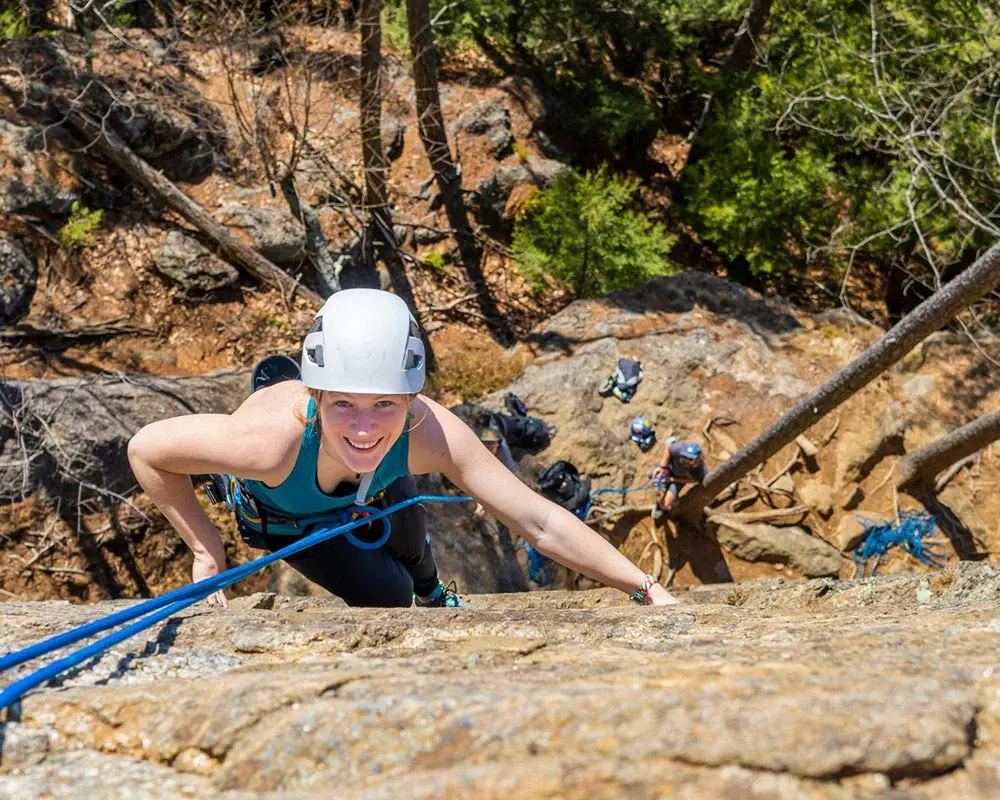You’ve likely heard the adage, ‘the best view comes after the hardest climb,’ but the level of difficulty and risk involved takes on a whole new meaning when it comes to free climbing vs. free solo.
For thrill-seekers and adventurers, the allure of rock climbing offers an unparalleled opportunity to experience the world from new heights while simultaneously pushing physical and mental boundaries.
If you crave the exhilarating challenge of scaling seemingly insurmountable rock faces without relying on climbing gear, you’ll find yourself faced with an important decision: free climbing or free soloing.
Both free climbing and free soloing are captivating sports that offer unique experiences to those who dare to ascend, demanding skill, courage, and preparation.
Both disciplines offer the thrill of climbing without relying on gear. However, the major difference is that free climbing uses safety equipment like ropes and protective gear for backup, while free soloing is done entirely without any protection.
To help you decide which discipline is best for you, we’ll explain the basics of each and the achievements, risks, and controversies surrounding them.
Key Takeaways
- Free climbing and free soloing offer unique experiences, demanding skill, courage, and preparation.
- Free climbing involves using safety equipment, providing a secure yet thrilling challenge.
- Free soloing is an extreme form of climbing without any protection, relying solely on strength and skill.
- Free climbing is safer and more accessible, while free soloing is for experienced climbers with higher risks.
Introduction to Free Climbing and Free Soloing
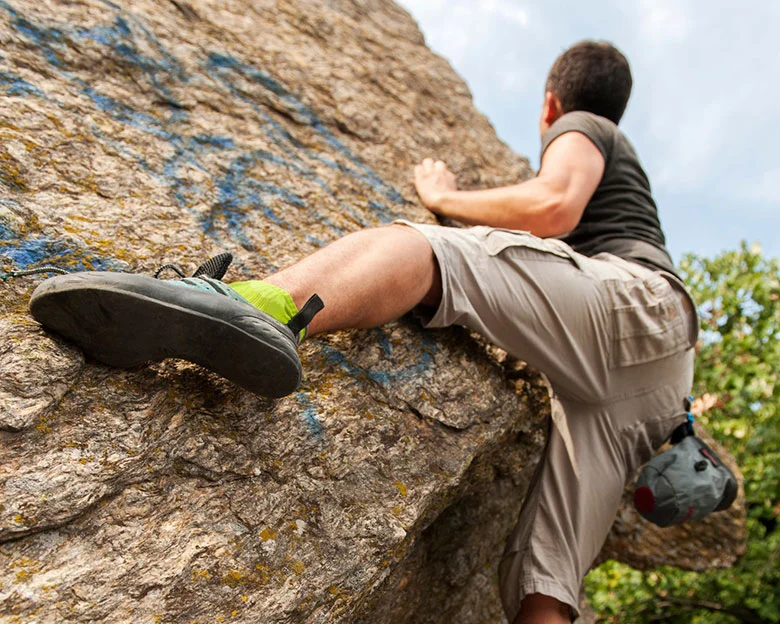
Free climbing and free soloing offer distinctly different experiences for thrill-seekers and present unique challenges, rewards, and risks.
Once you’ve mastered basic rock climbing skills, you may feel ready to climb without using harnesses and ropes for the ascent. You’ve probably heard of free climbing and free soloing. Now you want to know which sport suits you, considering your climbing abilities, personal preferences, and appetite for adventure.
While both free climbing and free soloing test the limits of human strength, endurance, and fearlessness, the absence of safety measures and lack of a climbing partner in free soloing set it apart as the most extreme and solitary pursuit.
In the following sections, we’ll delve deeper into the intricacies of free climbing and free soloing, shedding light on the risks and benefits they offer to those who embrace the challenges.
What is Free Climbing?
In contrast to its riskier counterpart, free soloing, free climbing offers climbers the security of ropes and gear while still presenting a thrilling physical challenge. This form of climbing allows you to push your limits and test your skills while knowing that a safety net is in place in case you slip or lose your grip.
The adrenaline rush and sense of accomplishment that comes with conquering a challenging route can be incredibly rewarding, making free climbing an excellent way to satisfy your adventurous spirit and desire for freedom. While free climbing still requires a great deal of skill, strength, and mental focus, the presence of safety equipment makes it an appealing choice for both novice and experienced climbers alike.
As you progress in your climbing journey, you’ll find that the use of safety gear in free climbing frees you to tackle more difficult routes. Also, because you can concentrate on your climbing technique without fear of major injury, it allows you to improve your skills with each successful ascent.
Free climbing requires proper climbing gear and also the use of protective gear. Read on to find out what should be in your kit bag when you try this sport!
Protective Gear used in Free Climbing
Though it may seem intimidating at first, the use of protective gear in free climbing is what sets it apart, making it both accessible and thrilling. So here are the basics:
1. Climbing harness: The harness wraps around your waist and legs, securely connecting you to the rope. Choosing a comfortable, well-fitting harness you can trust is important.
2. Climbing rope: The ropes are specifically designed for climbing. The rope must be strong, durable, and dynamic (meaning it can stretch slightly to absorb the impact of a fall.) Your rope is your lifeline while climbing, so always inspect it for any signs of damage before use.
3. Protection devices: Also known as ‘pro,’ these devices are used to create temporary anchor points in the rock for your rope. In traditional climbing, you’ll place your own protection, such as nuts and cams, while in sport climbing, you’ll clip your rope to pre-installed bolts.
As you become more familiar with the gear and its proper use, you’ll be ready to explore the three types of free climbing– sport climbing, trad (traditional) climbing, and bouldering– each offering its own unique challenges and rewards.
Types of Free Climbing: Sport climbing, Trad Climbing, Bouldering
So what are the differences between these three types of free climbing, and which is for you?
Here is a table summarizing the differences between the three types of free climbing: sport climbing, trad climbing, and bouldering.
| Type of Free Climbing | Description | Gear Used | Height of Formations Climbed |
|---|---|---|---|
| Sport Climbing | Climbing routes with pre-placed bolts for protection. Focus on physical and technical aspects without placing own gear. | Pre-placed bolts for protection. | Varies, typically longer routes. |
| Trad Climbing | Climbers place their own gear as they ascend, adding complexity and mental challenge. | Climbers place their own protective gear. | Varies, often longer routes with multiple pitches. |
| Bouldering | Climbing smaller rock formations or artificial walls, typically no higher than 20 feet. Ascend without protective gear. | No protective gear used, but crash pads and spotters for safety. | Smaller formations or artificial walls, typically no higher than 20 feet. |
Each of these free climbing styles has its own appeal and which suits you best will depend on your skill level and personal preferences. Do you crave the adrenaline rush and freedom of trad climbing, the relative safety, and simplicity of sport climbing, or the social and accessible nature of bouldering?
Regardless of the style you choose, free climbing offers opportunities for personal growth, camaraderie, and the chance to truly connect with the natural world around you.
Let’s dive into the sport of free soloing to help you decide what type of free climbing is for you.
Learn more about the basics of free climbing.
Get access to our complete archive of expert articles on free climbing.
What is Free Soloing?
This extreme form of climbing involves scaling rock faces without using ropes, harnesses, or any protective gear.
While the thrill and sense of freedom may entice you, be aware that free soloing comes with significant risks and dangers, as even the smallest mistake can lead to severe consequences.
It’s crucial to approach this discipline with a deep respect for its challenges and a commitment to meticulous preparation and skill development.
Learn more about the most legendary free solo climbs of all time!
Challenges of Free Soloing
Free solo climbers rely solely on their physical strength, mental fortitude, and technical skills to conquer the most challenging routes without the comfort of a rope or harness to catch them in case of a fall.
This extreme form of climbing pushes the limits of human ability and showcases the raw power and determination of the climbers who dare to take on such a challenge. While the adrenaline rush and sense of accomplishment that comes with free soloing can be incredibly rewarding, it’s not a style of climbing to be taken lightly.
The potential consequences of a single misstep or momentary lapse in concentration can be catastrophic, making free soloing one of the sport’s most dangerous and controversial disciplines.
In the following section, we’ll take a closer look at the risks and dangers associated with free soloing and why it continues to captivate both climbers and spectators alike.
The Risks and Dangers Associated with Free Soloing
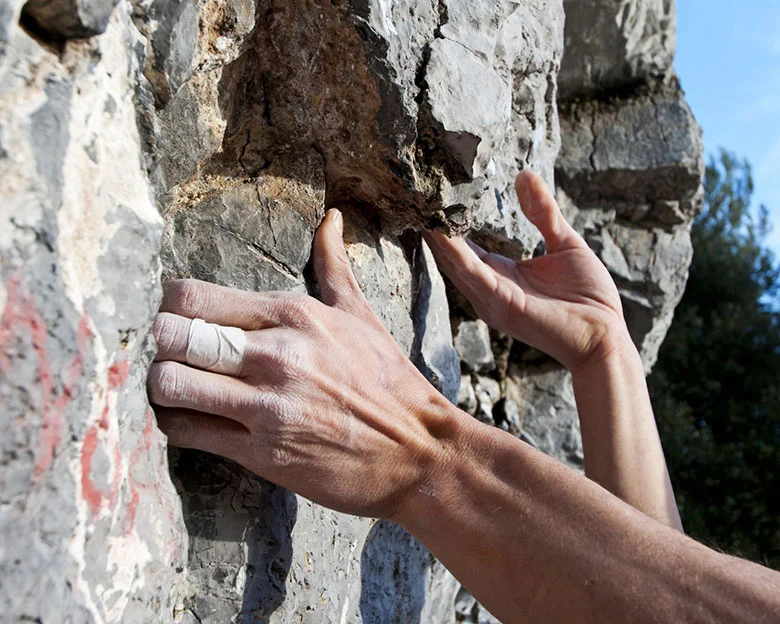
When venturing into the world of free soloing, you’re truly walking a razor’s edge, where the exhilarating thrill of conquering a route without any safety gear is tempered by the ever-present shadow of potential disaster.
The risks are exponentially higher than the other free climbing sports because even the slightest slip or misjudgment can result in a fatal fall.
In addition to the obvious physical dangers, free soloing demands immense mental strength and unwavering focus. Climbers must rely solely on their skills, stamina, and experience to navigate treacherous terrain without the security of a rope or partner.
As you learn more about free soloing, you’ll come to appreciate the immense courage and dedication displayed by those who have made a name for themselves in this extreme sport. Their awe-inspiring achievements, often defying the limits of human endurance and capability, continue to captivate and inspire climbers and non-climbers alike.
But remember, while these athletes may make it look easy, the reality is that free soloing requires a mastery of climbing techniques, years of experience, and an unyielding determination to face the ever-present risks head-on.
Comparing The Risks and Benefits of Free Climbing and Free Soloing
Ready to weigh the pros and cons of each thrilling adventure? Let’s dive into the risks and benefits of free climbing and free soloing.
On one hand, free climbing allows you to test your physical limits and mental focus while having the reassurance of safety gear, such as ropes and harnesses, to catch you in case of a fall. This added protection allows you to explore more challenging routes and push your boundaries while enjoying the camaraderie and support of a climbing partner.
On the other hand, free soloing offers an unparalleled sense of freedom and adrenaline as you rely solely on your skills, strength, and mental fortitude to conquer the rock face. However, this exhilarating pursuit comes with a heavy dose of risk, as even a small mistake can result in severe injury or death.
When it comes to choosing between these two disciplines, it ultimately depends on your personal preferences, risk tolerance, and climbing experience. Regardless of which path you choose, always remember to prioritize safety, practice responsible climbing, and never underestimate the power of the mountains.
In the next section, we’ll help you navigate this decision-making process and find the perfect fit for your climbing journey.
If you want to learn more about free soloing, click here.
Choosing Between Free Climbing and Free Soloing
When deciding between free climbing and free soloing, there are several factors to consider. Such as your skill level, risk tolerance, and personal preferences.
Starting with free climbing is highly recommended for a beginner because it provides a safer environment for learning and building your climbing skills. Remember, the key is to find the climbing style that best suits your abilities and goals. Always prioritize safety.
Factors to consider when choosing between the two
Deciding between these exhilarating climbing styles depends on your preferences, skill level, and appetite for risk, so it’s essential to weigh the pros and cons carefully. Take some time to consider the following factors before making your choice:
Free climbing offers:
- A safer experience due to the use of ropes and gear.
- A more social experience as it typically involves climbing with a partner.
- Since free climbing is more popular than free soloing (which is practiced by only about 1% of climbers), it offers more training opportunities for beginners.
- As a more social activity, it is enjoyed by a larger community, and more opportunities for group activities.
- Finally, there is a lower barrier to entry due to less inherent risk compared to free soloing
On the other hand, free soloing offers:
- A greater sense of freedom and self-reliance
- An adrenaline-pumping challenge for the most experienced climbers
- A greater feeling of accomplishment when the goal is reached.
Both styles are rewarding in their own way, but it’s crucial to be honest with yourself about your abilities and goals. Remember that climbing is a journey, and there’s no shame in starting with a more accessible style like free climbing before attempting the more daring free solo climbs.
As you gain experience and confidence, you can always reassess your preferences and push your boundaries. Now, let’s explore some recommendations for beginners to help you get started on your climbing adventure.
Recommendations for beginners
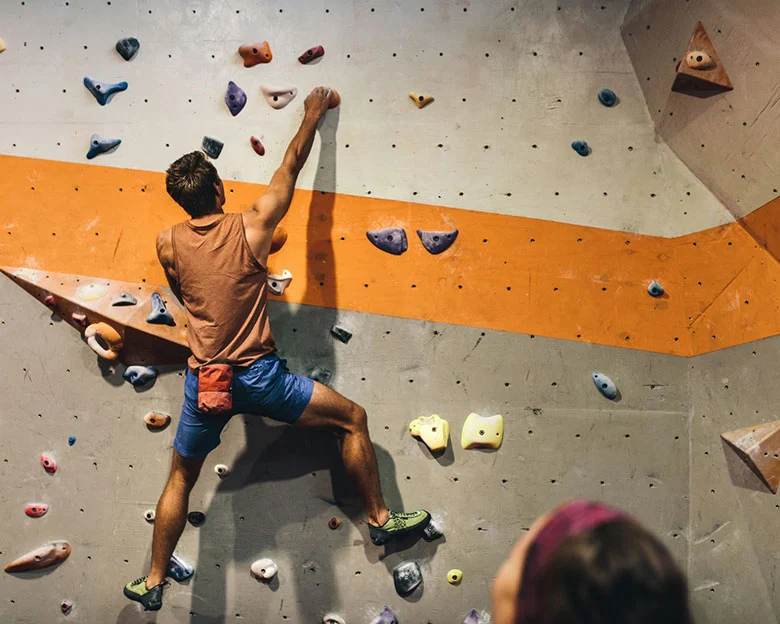
As a novice in the world of rock climbing, it’s essential to consider some guidelines and tips to ensure a safe and enjoyable experience.
First and foremost, it’s crucial to build a strong foundation in basic climbing techniques and safety measures before attempting either free climbing or free soloing. Start by taking a beginner’s climbing course at a local climbing gym or outdoor facility, where you can learn the necessary skills under the guidance of experienced instructors. Additionally, invest in the appropriate gear, such as climbing shoes, a harness, and a helmet, which will aid your progress and ensure your safety.
Free climbing is the recommended starting point for beginners, as it provides a more secure environment to develop your skills while still offering the thrill of ascending natural rock formations. Fee soloing should only be considered once you’ve reached a high level of expertise and mental preparedness, as the risks involved are significantly greater. As you continue to grow as a climber, always prioritize safety and never hesitate to seek guidance from more experienced climbers.
Ultimately, the climbing journey is personal, and the path you choose should align with your passion for the sport and your innate desire for freedom.
Want to explore even more types of rock climbing? Check out our list of the different types of rock climbing and how to choose the right one for you.
Frequently Asked Questions
How do climbers train and prepare for free climbing and free soloing?
To train and prepare for free climbing or free soloing, you’ll need to focus on developing your strength, endurance, and flexibility through targeted exercises like pull-ups, push-ups, and yoga. However, learning proper technique is even more important than your physical conditioning. Take the time to fully develop your technical skills at the climbing gym or on outdoor routes.
It takes a lot of practice to master climbing techniques such as smearing, jamming, and edging. Embrace the thrill of the climb and the sense of freedom that comes with pushing yourself to new heights, but never at the expense of your well-being. Remember, safety is paramount – always know your limits, and don’t hesitate to back off from a climb if something doesn’t feel right.
What are the mental aspects and challenges involved in both free climbing and free soloing?
Building a strong mental game is essential by exposing yourself to progressively more challenging routes, working on your fear management, and visualizing successful ascents. While free climbing and free soloing present their own mental challenges, free soloing significantly amplifies the mental game. In free climbing, you’re constantly assessing risks and making decisions with the safety net of ropes and gear.
However, when you step into the world of free soloing, every move becomes a high-stakes commitment, and your mental strength, focus, and ability to remain calm under pressure are crucial. Embracing the raw freedom of climbing without any safety equipment, you’ll need to develop an unshakable confidence in your skills and an innate understanding of your limits. So, whether you choose the exhilarating realm of free soloing or the camaraderie and calculated risks of free climbing, remember that mastering the mental aspects of the sport is just as important as honing your physical abilities.
What are the environmental and ethical considerations of free climbing and free soloing on natural rock formations?
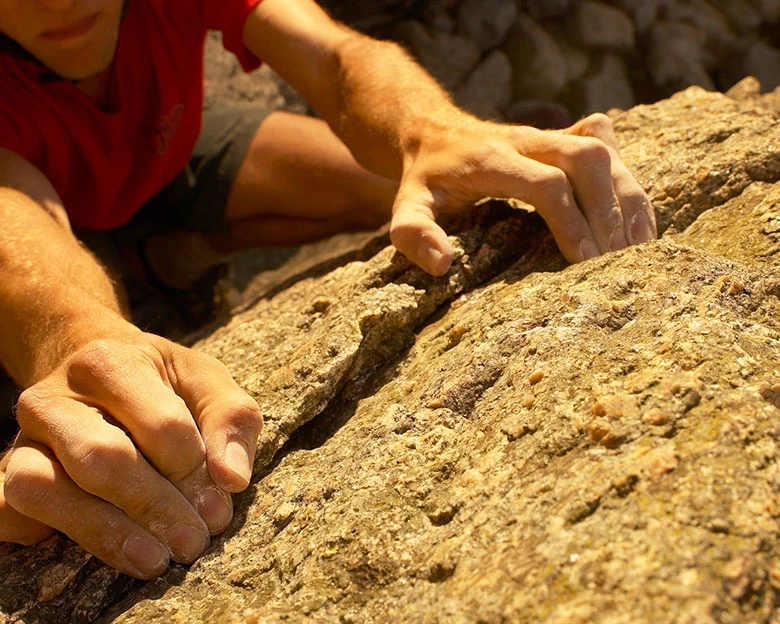
As a passionate climber, it’s crucial to consider your actions’ environmental and ethical implications on natural rock formations. While free climbing and free soloing offer unparalleled feelings of freedom and exhilaration, they can also have adverse effects on the environment and the natural habitats of various species.
To minimize your impact, practice “Leave No Trace” principles, avoid climbing on fragile rock surfaces and respect any seasonal closures or restrictions designed to protect nesting birds or other wildlife. By being mindful of your actions and their consequences, you can enjoy the thrill of climbing while preserving the beauty and integrity of these awe-inspiring natural wonders for future generations.
Start Climbing Today!
We’ve explored the differences between free climbing and free soloing and discussed their unique challenges and benefits. As you consider which approach to pursue, remember that personal preference plays a significant role, and it’s crucial to weigh the risks and rewards before making a decision.
Free climbing allows you to experience the thrill of ascending a rock face while having the safety net of ropes and gear. This style is more popular and accessible, offering a wide range of challenges and opportunities to grow as a climber.
On the other hand, free soloing is an extreme form of the sport practiced by the most experienced climbers that demands precision, mental fortitude, and unwavering confidence in your abilities. The exhilarating freedom of climbing without any safety equipment can be a powerful draw for some, but the consequences of a mistake can be fatal.
Ultimately, free climbing and free soloing offer incredible experiences for those who dare to push their limits and embrace the beauty of the sport. So if you are a beginner, find a climbing gym and start learning the techniques needed for these thrilling sports!



